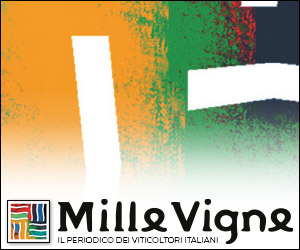Lorenzo Biscontin
I recently went to see the Cirque du Soleil show “Alegria”.
In the past I had seen clips of Cirque du Soleil shows on screen, but this was the first time I had seen a live show.
In addition to the interest of a normal spectator, there was the curiosity of a business management professional since Cirque du Soleil is known and studied as a business case for having revolutionized the way of doing circuses, relaunching, reinventing, a sector in crisis.
To cite only the most famous example, Cirque du Soleil is a case cited in the book “Blue Ocean Strategy – How to Create Uncontested Market Space and Make the Competition Irrelevant” for its ability to successfully reinvent by moving the target from children to adults, inserting elements of theater, dance and music into the entertainment show offered.
Above all, the most radical and differentiating innovation compared to traditional circuses up to that point, Cirque du Soleil was born in 1984, was the elimination of every animal, wild or otherwise, from the show. It should be noted that this change makes a lot of economical and management sense in running a circus, as well as evidently having a significant ethical value towards the public to which the show is addressed.
With these premises, I entered the Grand Chapiteau to see the show.
What I saw was Circus performed at the highest world levels, of course, but Circus in the end.
Let me explain better.
The acrobatics are incredible, the musicians are great, the costumes are wonderful, the two clowns are funny, the two singers are great and the whole atmosphere is fascinating, but the show consists of a sequence of circus numbers interspersed with comic interludes by the two clowns and/or musical sung.
Let me explain even better, because otherwise it seems like I didn’t like it.
There were the floor acrobats, the one with the hoop on the floor, the ones on the trampolines, the flying ones, the juggler with the fire clubs, the flying acrobats, the acro-pole, the contortionist with the hula hoops, etc… and the show ended (as per circus tradition) with the trapeze artists.
I repeat, everything performed at the highest levels imaginable, and even beyond the imaginable, but structurally nothing so different, animals aside, from what you saw in the big, better, “classic” circuses that until twenty years ago languished for lack of spectators and have now essentially disappeared.
In the same way that even in the circuses of the past there was the band and the clowns who did their pantomimes between one act and another to fill the gaps necessary for the preparation.
In short (in my opinion) the success of Cirque du Soleil is essentially based on:
– Performances of the highest quality on a world-wide level, that is, when I go to see a Cirque du Soleil show I know I will see the best in the world,
– Rarity of the shows: the chances of seeing a Cirque du Soleil show live are few, especially compared to the general annual frequency with which I could see a “classic” circus,
– Theatrical setting for sets and lights that increases the charm and surprise of the artists’ acts.
From a certain point of view, details (always except for the absence of animals) that however make going to see a Cirque du Soleil show a once-in-a-lifetime experience and therefore one is willing to pay for an expensive ticket (but in line with other forms of world-class live entertainment). This creates a virtuous circle that feeds itself, allowing the excellence of the shows offered to be maintained.
Is everything so beautiful? It depends: the number of spectators of Cirque du Soleil shows has reached records that none of the classic circuses would have imagined, but certainly the number of people who have ever seen a circus show in their lives has decreased compared to the pre-Cirque du Soleil era.
Would it have happened anyway? Very likely because the traditional circus was already losing interest and audience. However, the fact remains that Cirque du Soleil, rather than relaunching the sector by transforming it, has become basically its only survivor.
It is at this point that the wine sector came to mind. Will the future development model be that of Cirque du Soleil?
From a daily habit, wine will become a rare experience (I don’t say once in a lifetime), linked only to excellent wines (world-class?). The concept of “drinking less, but better” essentially envisages this and the direction in which consumption is going is already this, with wine drunk mainly on weekends.
Will people only drink “the best” (harder to define than an acrobatic act) and everything from “average” down will disappear? Here too, the premiumization, so much and often recommended, goes in this direction.
The last question I ask myself is also the one that intrigues me the most: to reopen the circus to a wider audience, Cirque du Soleil has removed a central element of the traditional circus, also called Equestrian Circus by no coincidence: the acts with animals. What is that central element of wine that we should remove to regain the interest of the public?



